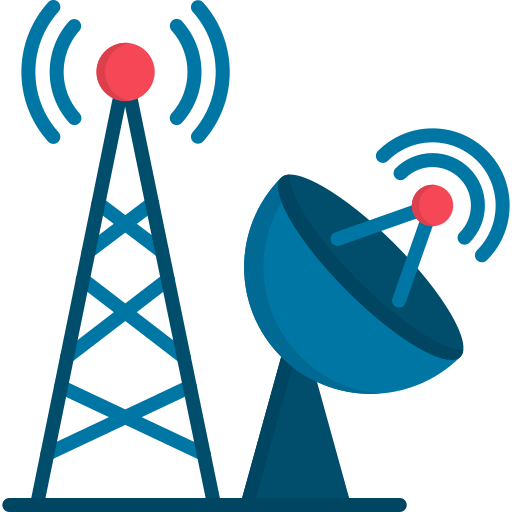Stamp: Ministry of Communications and Information Technology, 25th (Egypt 2024)
Ministry of Communications and Information Technology, 25th (Egypt 2024)
01 October (Egypt ) within release Ministry of Communications, 25th Anniversary goes into circulation Stamp Ministry of Communications and Information Technology, 25th face value 10 Egyptian pound
| Stamp Ministry of Communications and Information Technology, 25th in catalogues | |
|---|---|
| Stamp Number: | Sn: EG 2333f |
| Colnect codes: | Col: EG 2024.10.01-01f |
Stamp is square format.
stamp from souvenir sheetAlso in the issue Ministry of Communications, 25th Anniversary:
- Mini Sheet - Ministry of Communications and Information Technology face value 21*10;
- Stamp - Ministry of Communications and Information Technology, 25th face value 10;
- Stamp - Ministry of Communications and Information Technology, 25th face value 10;
- Stamp - Ministry of Communications and Information Technology, 25th face value 10;
- Stamp - Ministry of Communications and Information Technology, 25th face value 10;
- Stamp - Ministry of Communications and Information Technology, 25th face value 10;
- Stamp - Ministry of Communications and Information Technology, 25th face value 10;
- Stamp - Ministry of Communications and Information Technology, 25th face value 10;
- Stamp - Ministry of Communications and Information Technology, 25th face value 10;
- Stamp - Ministry of Communications and Information Technology, 25th face value 10;
- Stamp - Ministry of Communications and Information Technology, 25th face value 10;
- Stamp - Ministry of Communications and Information Technology, 25th face value 10;
- Stamp - Ministry of Communications and Information Technology, 25th face value 10;
- Stamp - Ministry of Communications and Information Technology, 25th face value 10;
- Stamp - Ministry of Communications and Information Technology, 25th face value 10;
- Stamp - Ministry of Communications and Information Technology, 25th face value 10;
- Stamp - Ministry of Communications and Information Technology, 25th face value 10;
- Stamp - Ministry of Communications and Information Technology, 25th face value 10;
- Stamp - Ministry of Communications and Information Technology, 25th face value 10;
- Stamp - Ministry of Communications and Information Technology, 25th face value 10;
Stamp Ministry of Communications and Information Technology, 25th it reflects the thematic directions:
An anniversary is the date on which an event took place or an institution was founded in a previous year, and may also refer to the commemoration or celebration of that event. For example, the first event is the initial occurrence or, if planned, the inaugural of the event. One year later would be the first anniversary of that event. The word was first used for Catholic feasts to commemorate saints. Most countries celebrate national anniversaries, typically called national days. These could be the date of independence of the nation or the adoption of a new constitution or form of government. The important dates in a sitting monarch's reign may also be commemorated, an event often referred to as a "Jubilee".
Communication is commonly defined as the transmission of information. Its precise definition is disputed and there are disagreements about whether unintentional or failed transmissions are included and whether communication not only transmits meaning but also creates it. Models of communication are simplified overviews of its main components and their interactions. Many models include the idea that a source uses a coding system to express information in the form of a message. The message is sent through a channel to a receiver who has to decode it to understand it. The main field of inquiry investigating communication is called communication studies.
A globe is a spherical model of Earth, of some other celestial body, or of the celestial sphere. Globes serve purposes similar to maps, but, unlike maps, they do not distort the surface that they portray except to scale it down. A model globe of Earth is called a terrestrial globe. A model globe of the celestial sphere is called a celestial globe
A map is a symbolic depiction emphasizing relationships between elements of some space, such as objects, regions, or themes. Many maps are static, fixed to paper or some other durable medium, while others are dynamic or interactive. Although most commonly used to depict geography, maps may represent any space, real or imagined, without regard to context or scale, such as in brain mapping, DNA mapping, or computer network topology mapping. The space being mapped may be two dimensional, such as the surface of the earth, three dimensional, such as the interior of the earth, or even more abstract spaces of any dimension, such as arise in modeling phenomena having many independent variables. Although the earliest maps known are of the heavens, geographic maps of territory have a very long tradition and exist from ancient times. The word "map" comes from the medieval Latin Mappa mundi, wherein mappa meant napkin or cloth and mundi the world. Thus, "map" became the shortened term referring to a two-dimensional representation of the surface of the world.
Telecommunication, often used in its plural form or abbreviated as telecom, is the transmission of information with an immediacy comparable to face-to-face communication. As such, slow communications technologies like postal mail and pneumatic tubes are excluded from the definition. Many transmission media have been used for telecommunications throughout history, from smoke signals, beacons, semaphore telegraphs, signal flags, and optical heliographs to wires and empty space made to carry electromagnetic signals. These paths of transmission may be divided into communication channels for multiplexing, allowing for a single medium to transmit several concurrent communication sessions. Several methods of long-distance communication before the modern era used sounds like coded drumbeats, the blowing of horns, and whistles. Long-distance technologies invented during the 20th and 21st centuries generally use electric power, and include the telegraph, telephone, television, and radio.





